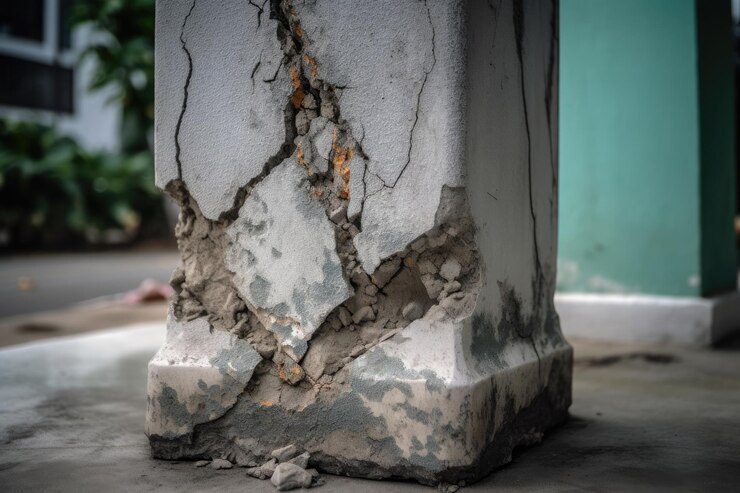In the bustling urban landscape of Brooklyn, Queens, and the suburban charm of Long Island, concrete is a ubiquitous construction material. While it offers durability and versatility, common concrete problems can arise, requiring attention and effective solutions.
This blog will explore prevalent issues such as problems with self-leveling concrete, challenges with colored concrete, and concerns specific to concrete block houses in the region. Let’s delve into these common concrete problems and discover reliable solutions that ensure longevity and resilience.
Common Concrete Problems:
Cracking Woes:
One of the most frequent issues in concrete surfaces is cracking. Harsh weather conditions, soil movement, and poor installation practices contribute to these cracks. To combat this, proper joint spacing and the use of high-quality concrete mix can prevent cracks from forming. Additionally, timely sealing of cracks can deter moisture infiltration, preserving the structural integrity of the concrete.
Problems with Self-Leveling Concrete:
Self-leveling concrete is an excellent solution for achieving smooth and even surfaces. However, issues such as improper mixing, incorrect application, or inadequate surface preparation can lead to leveling problems. To address this, it’s crucial to follow manufacturer guidelines meticulously, ensuring precise mixing ratios and proper surface priming. Hiring experienced professionals for installation can also minimize the risk of self-leveling concrete problems.
Spalling:
Spalling, the chipping or breaking away of concrete surfaces, is commonly caused by moisture infiltration or corrosion of reinforcing steel. Addressing the root cause, such as improving drainage and using corrosion-resistant materials, is crucial. Applying a protective concrete sealer can also act as a barrier against moisture, preventing spalling.
Crazing:
Crazing manifests as a network of fine cracks on the surface, often due to rapid drying or improper curing. To minimize crazing, it’s essential to control the rate of drying, use curing compounds, and avoid finishing techniques that can contribute to surface cracking. Applying a curing membrane can further enhance resistance to crazing.
Curling:
Curling, where the edges of a concrete slab lift or curl, can result from differential drying or improper installation. Addressing the root cause through proper subgrade preparation, controlling the curing process, and using appropriate jointing techniques can prevent excessive curling in concrete surfaces.
Buckling Concrete
Buckling, a more severe issue, involves the upward movement of concrete slabs. This can be caused by expansive soils or inadequate support. Implementing proper soil preparation, drainage systems, and employing professional engineering services can prevent and rectify buckling in concrete structures.
Colored Concrete Issues:
Colored concrete is a popular choice for enhancing aesthetic appeal, but maintaining its vibrant hue can be challenging. Factors like exposure to UV rays, harsh weather, and inadequate sealing can cause color fading or discoloration. The key to preserving the color is using high-quality pigments and applying a UV-resistant sealant regularly. This protective layer acts as a shield against environmental elements, maintaining the concrete’s aesthetic charm.
Concrete Block House Problems:
Concrete block houses offer durability, but they too face specific challenges. Moisture penetration, efflorescence (white, powdery deposits), and structural settling are common concerns. Proper waterproofing, adequate drainage systems, and regular inspections can mitigate these issues. Addressing any signs of settling promptly can prevent more severe structural problems in concrete block houses.
Blisters:
Blisters, or raised pockets on the concrete surface, are often caused by the entrapment of air or excess moisture during the curing process. Using well-graded aggregates, proper mix design, and avoiding over-troweling during finishing can minimize the risk of blistering.
Efflorescence:
Efflorescence, the appearance of white, powdery deposits on the surface, occurs when soluble salts migrate to the surface and react with moisture. Enhancing drainage, using low-permeability concrete mixes, and applying effective waterproofing measures can help control efflorescence and maintain the visual integrity of the concrete.
Conclusion:
Navigating common concrete problems in Brooklyn, Queens, and Long Island involves understanding the unique challenges posed by the region’s environmental and urban conditions. By employing preventative measures, utilizing high-quality materials, and seeking professional expertise when needed, property owners can ensure that their concrete structures stand the test of time. Whether it’s dealing with self-leveling concrete woes, colored concrete challenges, or issues specific to concrete block houses, proactive solutions pave the way for resilient and long-lasting concrete surfaces in this dynamic urban landscape.
Frequently Asked Questions
What is concrete damage?
Concrete damage refers to any deterioration, impairment, or harm to the structural integrity, appearance, or functionality of concrete surfaces. This can include issues such as cracking, spalling, discoloration, or other forms of wear and tear that compromise the overall quality and performance of concrete structures.
What is honeycombing in concrete?
Honeycombing in concrete refers to voids or gaps left in the material due to incomplete consolidation, resulting in a clustered appearance resembling a honeycomb. It weakens the concrete and compromises its durability and aesthetics.
What is spalling of concrete?
Spalling of concrete is the chipping or breaking away of the surface layer, often caused by factors like freeze-thaw cycles, moisture, or corrosion of reinforcing steel, leading to the deterioration of the concrete’s integrity.
What is bleeding in concrete?
Bleeding in concrete is the upward movement of water within the mix, resulting in the accumulation of water at the surface. This can impact the quality of the concrete and its finishing, potentially leading to surface defects.
What is shrinkage in the concrete?
Shrinkage in concrete refers to the reduction in volume during the drying and curing process, causing the material to contract. This can lead to cracks and other structural issues if not properly managed.
What is creep in RCC?
Creep in Reinforced Concrete (RCC) is the gradual deformation or movement that occurs over time under sustained loads. It is a time-dependent phenomenon where the concrete experiences slow, long-term deformation, impacting the overall structural behavior.

